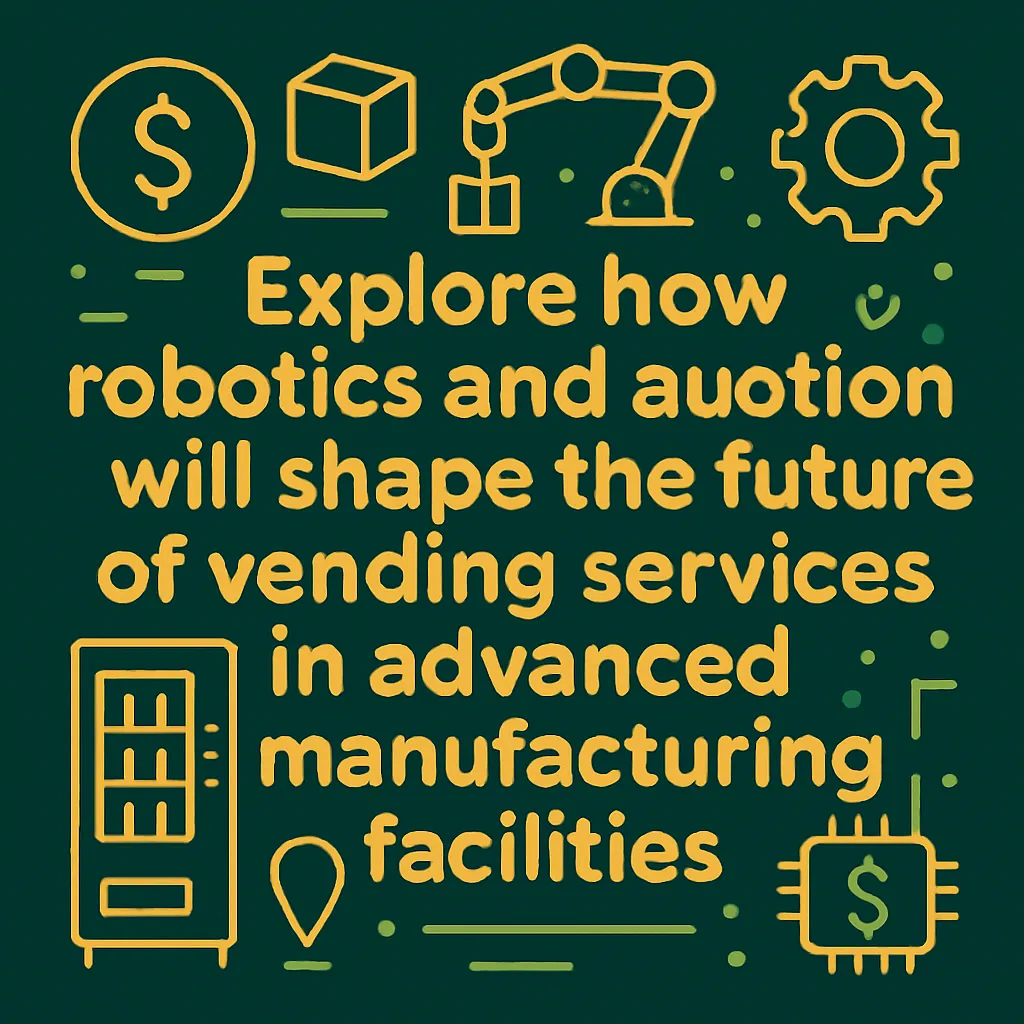Future of Robotics and Automation in Factory Vending
Explore how robotics and automation will shape the future of vending services in advanced manufacturing facilities.
Back to Vending for Manufacturing ResourcesExplore how robotics and automation will shape the future of vending services in advanced manufacturing facilities.
Back to Vending for Manufacturing ResourcesThe integration of robotics and automation is set to revolutionize how manufacturing facilities provide refreshments, tools, and PPE to their workforce, increasing efficiency and accessibility.
![]() Automated restocking ensures continuous product availability
Automated restocking ensures continuous product availability
![]() Robotic delivery systems bring items directly to workstations
Robotic delivery systems bring items directly to workstations
![]() AI-driven insights optimize inventory and personalize offerings
AI-driven insights optimize inventory and personalize offerings

The manufacturing sector is continuously evolving, driven by innovations in robotics and automation. This transformation extends beyond production lines to essential employee services, particularly vending. The future of factory vending is poised for a significant leap forward, offering unparalleled efficiency, customization, and convenience to the industrial workforce.
One of the most impactful advancements will be fully automated restocking and predictive maintenance. Imagine vending machines that not only sense low stock levels but also autonomously call for resupply or even deploy robotic units to replenish items. AI algorithms will analyze sales data, predict demand spikes (e.g., specific shifts, seasonal needs), and optimize inventory in real-time, reducing the need for human intervention and eliminating stockouts. This ensures that industrial facilities always have necessary items—from snacks and beverages to critical welding gloves—available 24/7. Moreover, AI will monitor machine performance, anticipating maintenance needs before they become critical issues, thus minimizing downtime.
Robotics will also introduce mobile vending units capable of navigating factory floors. These autonomous machines can deliver items directly to production lines or specific workstations, reducing worker travel time and increasing productivity. This also opens doors for highly personalized offerings. AI can learn individual employee preferences, dietary restrictions, and even shift-specific needs, ensuring tailored selections. For instance, a night shift worker might prefer energy drinks and hearty snacks, while an early morning shift worker might opt for coffee and lighter breakfast items. Shift-friendly vending options will become even more precise.
The integration of advanced sensors and cameras with AI will revolutionize security and operational insights. These systems can provide real-time monitoring to prevent theft and optimize machine placement based on actual usage patterns, not just assumptions. Data analytics will offer deep insights into consumption trends, enabling factory managers to make informed decisions about product mixes. Payment systems will also advance, with touchless options becoming standard, offering seamless transactions through employee badges, biometrics, or mobile payments. This also ties into overall operational efficiency, reducing errors and providing transparency in transactions. To see how one manufacturing facility has already embraced modern vending solutions, explore this case study on vending in a manufacturing facility.
Robots will automate restocking, maintenance, and even mobile delivery of items directly to workers on the factory floor, improving efficiency and reducing labor costs.
AI will analyze purchasing patterns, predict demand, optimize inventory, and personalize product offerings in factory vending machines, ensuring optimal stock and worker satisfaction.
Yes, autonomous units are expected to become common, navigating factory environments to bring refreshments, PPE, or tools directly to workstations or break areas.
Automated systems will use sensors and data analytics for real-time inventory tracking, enabling precise restocking schedules and minimizing stockouts of critical items.
Predictive maintenance, driven by AI, will identify potential machine failures before they occur, reducing downtime, extending machine lifespan, and ensuring continuous service.
By automating the delivery of safety equipment and reducing human interaction with hazardous zones for restocking, robotic vending can contribute to a safer factory environment.
Future systems will predominantly feature touchless payments, biometric authentication, and seamless integration with factory employee ID systems for ultra-convenient transactions.
Automation can lead to more energy-efficient operations, reduced waste through optimized inventory, and potentially the use of sustainable materials in machine design and product packaging.
AI and robotics will allow for highly personalized vending options based on individual worker preferences, dietary needs, and even real-time performance data.
Challenges include initial investment costs, integration with existing factory infrastructure, cybersecurity concerns, and the need for specialized technical support for complex systems.